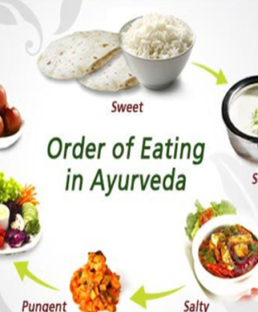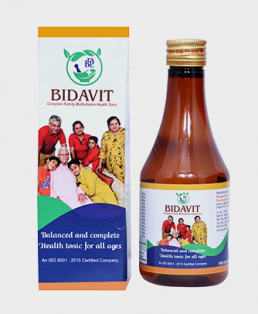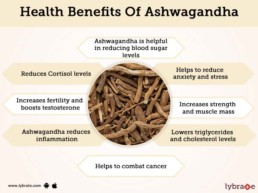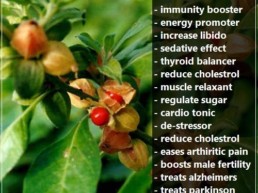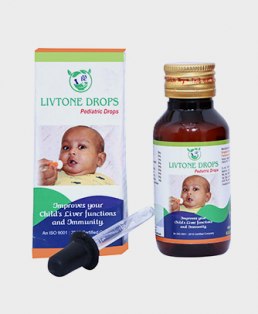Nutrition And Diet
What is Ayurvedic Nutrition?
Ayurveda, which comes from the ancient Vedic texts, is a 5,000-year-old medical philosophy and practice, predicated on the idea that we all are made up of different types of energy and states that poor nutrition is the main cause of disease and the Ayurvedic system uses food to heal and prevent illness.
Ayurveda is centered around three energies called doshas — vata, pitta and kapha. Each person is a unique makeup of these doshas, and that composition is called one’s prakruti. While all three are present in everyone, Ayurveda proposes that we each have a dominant dosha that’s unwavering from birth, and ideally an equal (though often fluctuating) balance between the other two. When the doshas are balanced, we are healthy; when they are unbalanced, we develop disease, which is usually made manifest by skin issues, poor digestion, insomnia, irritability, and anxiety.
This is the principle that recognizes that each human being is born with unique combinations of doshas, and that this natural balance is what is responsible for physical, mental, and emotional difference among people. By identifying and maintaining an individual’s Prakruti, Ayurveda can help each person create his or her own state of ideal health. Every person digests and assimilates food differently.



Doshas and Diet
The doshas govern physical, mental and spiritual health. According to ayurvedic teachings, a person’s prakruti is immutable. Ayurveda advocates preventive care by balancing one’s doshic makeup through diet.
Vata: comprises air and ether, and is associated with lightness, dryness, change and creativity. According to ayurveda, people who are predominantly vata are spiritual, positive and adaptable when balanced — and restless, indecisive and fearful when vata is unbalanced. Vatas are said to have dry skin, and experience stiffness, gas, constipation and coldness when the dosha is unbalanced. An ayurvedic practitioner may recommend warm, wet food like soups, oils and herbal teas.
Pitta: encompasses fire and water, and is associated with sharpness, drive and confidence. Those who are predominantly pitta are reportedly competitive, powerful, focused and expressive. They are leaders and visionaries when pitta is balanced, but may become demanding and arrogant when out of balance. According to ayurveda, pittas may suffer from inflammation, acid reflux and overheating, and a diet of sweet, cool foods such as juice, salads, raw seeds and cooling herbs while avoiding alcohol, caffeine and spicy food may help balance pitta.
Kapha: is associated with oiliness, density, languidness and stability. Kaphas are said to be kind, caring and patient. When kapha is balanced, they are providers and nurturers. Out of balance, kaphas reportedly tend toward depression, neediness and secrecy. Physically, they may suffer from weight gain, high cholesterol and congestive disorders. An ayurvedic practitioner may recommend bitter, light and dry food to balance kapha, including salads, beans, citrus and whole grains, and avoiding salt, overeating and sugar.


Bacidyl F
BACIDYL-F
For the treatment of both
- Bacillary & Amoebic Dysentery
INDICATION
- For both Amoebic & Bacillary Dysentery
- Indigestion Diarrhea in children.


PRESENTATION
100 ML & 60 ML
DOSAGE
1 t.s.f 4 times daily in acute case.
1 t.s.f 3 times daily in a chronic case or as directed by the Physician.
| Each 5 ML contains | |
|---|---|
| Hollarhena Antidysentrica | 500mg |
| Andrographis Paniculata | 500mg |
| Embellica Fructus | 300mg |
| Plumbago Resea | 100mg |
| Oldenlandia Corrymbosa | 10mg |
| Oil of anethi extract | 200mg |
| Embellia Ribes | 200mg |
THERAPEUTICS NOTES
- Hollarhena Antidysebtrica – anti diarroheal & relieves gripping pain.
- Andrographispaniculata – anti hemitic, relieves spasm.
- Embellia Fructus – antringent and anti helmithic action.
- Plumbago Rosea – controls liver infection.
- Oldenlandia Corrymbosa – anti diarrhoeal and antispasmodic action.
- Oil of anethi extract– astringent and soothing action.
- Embellia Ribes – inhabits liver infection & anti diarhoeal in action.
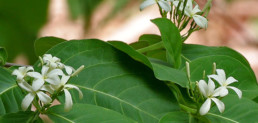
Alkarex - Alkalizer
ALKAREX
For the treatment of
- Pyrexia
- Acidosis
- Urinary Disorder
INDICATION
- In all types of febrile condition
- Acidosis & electrolytic imbalance
- B. Coli infection
- Urinary tract infection
- Nausea and vomiting


PRESENTATION
110 ML, 200 ML & 450 ML
DOSAGE
Adult: 2 tsf 3 times daily
Children: 5 ML 3 times daily or as directed by the Physician.
| Each 5 ML contains | |
|---|---|
| Aromaticus Benth (Patharchun) | 100mg |
| Tribulus Terrestris Linn (Gokhur) | 120mg |
| Boerhavia Diffuse (Punarva) | 200mg |
| Jabakher (Jabkhar)(Chemical composition with potassium bicarbonate) | 200mg |
THERAPEUTICS NOTES
- Patharchun: It is efficaciousin in all urinary disease and suppression of urine.
- Gokhur: It is cooling, diuretic and used in all types of urinary disorders.
- Punarva: It is also diuretic and is used in case of urinary suppression.
- Jabakher: It is used as an excellent and natural alkaliser.
- Potassium Bicarbonate: is used as diuretic and antacid.

Bidavit
BIDAVIT
For the treatment of
- Neurotic disorders, weakness and loss of weight
- Growth, Vitality, Vigor.
- General Health Tonic for all ages.
INDICATION
- For growth of children
- To restore vitality
- For retaining youthful vigor
- In case of Quashiorkor and marasmus in children.
- Loss of weight of all ages.

PRESENTATION
100 ML, 200 ML & 300 ML
DOSAGE
Adult: 2 t.s.f 3 times daily after meal.
Children: 1 t.s.f 3 times daily after meal or as directed be the physician.

| Each 5 Ml contains | |
|---|---|
| Aswagandha | 400mg |
| Anantakmul | 400mg |
| Baira (Bahara) | 200mg |
| Bala | 200mg |
| Alkusi | 200mg |
| Kalmegh | 400mg |
| Sonapata | 300mg |
| Juan | 200mg |
| Moko | 200mg |
| Kasis | 300mg |
| Each 5 ML contains | |
|---|---|
| Somtala | 400mg |
| Pipul | 200mg |
| Ajwan | 200mg |
| Kurchi | 200mg |
| Vasaka | 200mg |
| Satavari | 200mg |
| Shalmuli | 200mg |
| Simulmul | 200mg |
| Kakmarchi | 400mg |
THERAPEUTICS NOTES
- Aswagandha (Withania Somnifera): It is given in case of marasmus children, root is given in case of dyspepsia.
- Antamul (Tylophora Asthmatica): It acts as an emetic, cathetric, remedy in dysentery and catarrah.
- Kalmegh (Andrographis Paniculata): Acts as febrifage, antehelmithic, used in general debility, distemsion of bowels, acts as digestant, antimalarial and powerful tonic.
- Pipul Piper (Langum): Used in chronic bronchitis, acts as digestant, antidote in poisoning.
- Ajwan (Trachyspermaamni): Contains digestive enzyme and increases appetite, retains growth & vitality.
- Kurchi (Hollarrena Antidysentrica): It inhabits voluntary movement, helps in digestion, checks loose motion.
- Aswagandha (Withania Somnifera): It is given in case of marasmus children, root
- Vasaka (Adhatoda Vasica): It prevents diarrhea, produces essential oil and inhibits growth of non-acid fast bacilli.
- Baira: It stimulates nervous system.
- Satavari: It helps in mineral assimilation.
- Bala: It helps in carbohydrates digestion, energy liberation.
- Alkusi: It helps in protein synthesis & growth.
- Sonapata: It gives vitality and vigour.
- Juan: It helps indigestion.
- Moko: It is digestive, prevents loose motion. It relieves groping contains iron.
- Kasis: It helps indigestion.
- Kakamarchi: It helps indigestion & increases appetite.
- Shalmuli: It stimulates appetite.
Videx Cough Expectorant
VIDEX (Cough Expectorant)
- For cough, cold and Bronchitis
- Cold and sore throat
- Acute & chronic bronchitis
- Bronchitis
- Chronic Asthma
- Pharyngeal and laryngeal catarrh

PRESENTATION
110 ML & 60 ML
DOSAGE
Adult: 2 t.s.f 3 times daily
Children: 1 t.s.f 3 times daily or as directed by the Physician.

| Each 5 ML contains | |
|---|---|
| Ocium Sanctum | 30mg |
| Embelia Ribes | 30mg |
| Vitis Vanifera | 30mg |
| Myristical Fragrans | 30mg |
| Adhatoda Vasica | 50mg |
| Embelica Officianils | 15mg |
| Solanum Xanthicarpum | 30mg |
| Acalympha Indica | 100mg |
| Glycerrhiza | 50mg |
| Mentha Arunesis | 10mg |
| Acorus Calamus | 10mg |
| Cloves (EugenicaCaryophyllus) | 10mg |
| Piper Longum | 30mg |
| Mel (MadhucaLatifolia&Longifolia) | 5mg |
THERAPEUTICS NOTES
It is used for cough, cold, acute and chronic Bronchitis, Whooping Cough, Asthmatic Bronchitis, Pharyngeal and laryngeal contarrah.
- Ocium Sanctum (Tulsi): Used as stimulant, antiseptic and expectorant.
- Embelia Ribes (Biranga): Used for cough, cold and antibacterial activity against Staphylococcus aureus and E-coli.
- Vitis Verifera (Angur): Useful is cough and cold.
- Myristical Fragrans (Nutmeg): Contains essential oil (Sapani).
- Adhatoda Vasica (Vasak): Remedy for cough, cold and Bronchitis.
- Embelia Officianalis (Amlaki): Cough and cold.
- Cordia Dichomata (Jasthimadhu): Used in cardiac asthma.
- Solanum Xantocarpum(Kantikari): Expectorant in sore throat.
- Glycerizzha (Jastimadhu): Demulcent, expectorant.
- Menth Arvenesis (Pudina): Bronchodilator, soothing cough.
- AcorusCalamous (Boch): Emetic, antispasmodic.
- Cloves (Labanga) (Eugenic Coryophyllus): As an expectorant.
- Piperlongum (Pipul): Stimulant, expectorant, used in Bronchitis.
- Mel (Honey) (Madhucalatifolia&longifolia): Acts as demulcent, laxative and expectorant.
Livtone Veterinary
LIVTONE VETERINARY
For the treatment of Gestation and growth
INDICATION
- Stimulates appetite.
- Corrects Liver Disorders
- Helps in Digestion.
- Brings energy & Vitality.
- Corrects all types of Jaundice.
- Anorexia & malnutrition.

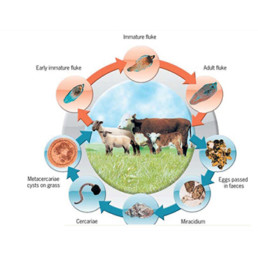
PRESENTATION
110ML, 200ML & 450ML
DOSAGE
Cattle: 20 ML 3 times daily
Calf: 10 ML 3 times daily
Puppy: 5 ML 3 times daily
Before meal, During meal or as directed
by the physician.
Adult dog : 10 ML 3 times daily
| Each 5 ML contains | |
|---|---|
| Capars Spinosa | 40mg |
| Embeha Ribes | 20mg |
| Andrographis Paniculata | 50mg |
| Apicum Graveolens | 40mg |
| Eclopta Erecta | 50mg |
| Berberis Asiatica | 40mg |
| Oldenlandia corymbosa | 40mg |
| Terminaha Arjuna | 50mg |
| Prepared in Syrupy Base | |
Livtone Drops
LIVTONE DROPS
(For Infants & Children)
For the treatment of
- Liver Dysfunction
- Bile Disorder & Jaundice
- Indigestion & Delayed Growth
INDICATION
- Stimulates appetite
- Corrects Liver Disorders
- Helps in Digestion
- Brings energy & vitality
- Corrects all types of Jaundice
- Delayed growth in Hepatitis
- Anorexia in Neo-Natal Hepatitis


PRESENTATION
60 Ml bottles with cover & dropper
DOSAGE
10 Drops 3 times daily or as directed by the Physician.
| Each Ml contains | |
|---|---|
| Caparis Spinosa | 20mg |
| Solanum Nigrum | 20mg |
| Embelica Ribes | 10mg |
| Oldenlandia Corymbosa | 20mg |
| Terminalia Arjuna | 20mg |
| Andrographis Paniculata | 20mg |
| Cassia Occidentalis | 20mg |
| Plumbago Rosea | 20mg |
THERAPEUTICS NOTES
- Caparis Spinosa (Kulekhera
Stimulates appetite. - Embelica Ribes (Biranga)
Inhabits fatty liver. - Andrographis Paniculata (Kalmegh)
It relieves gripping pain, loss of appetite & anti helminthic in action.
- Apicum Graveolens (Radhuni)
Carminative in action, useful in liver diseases. - Enclopta Erecta (Kesuti)
Acts as deobstrient in liver and spleen enlargement. - Berberis Asiatica (Daruharidra)
Used in all types of Liver complaints and also in Chronic Malaria. - Terminalia Arjuna (Arjuna)
Cardio tonic, used in the cardiac failure and fatty liver & liver necrosis.
Livtone Syrup
LIV-TONE SYRUP
For the treatment of
- Liver Dysfunction
- For Digestion and Growth
- Bile Disorder & Jaundice
INDICATION
- Stimulates appetite
- Corrects Liver Disorders
- Helps in Digestion
- Brings energy & vitality
- Corrects all types of Jaundice
- Anorexia & Malnutrition
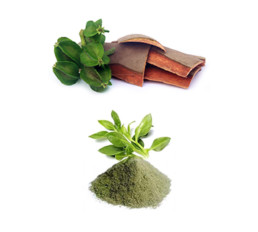
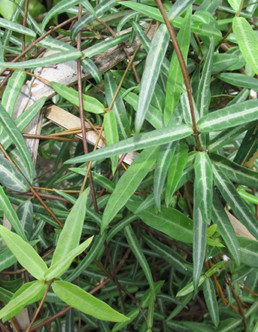
PRESENTATION
200 ML, 110 ML & 450 ML
DOSAGE
Adult: 10 ML 3 times daily
Children: 5 ML 3 times daily
Before meal, during meal or as directed by the Physician.
| Each 5ML Contains | |
|---|---|
| Caparis Spinosa | 40mg |
| Embelia Ribes | 20mg |
| Andrographis Paniculata | 50mg |
| Apicum Graveolens | 40mg |
| Eclopta Erecta | 50mg |
| Berberis Asiatica | 40mg |
| Oldenlandia Corymbosa | 40mg |
| Terminalia Arjuna | 50mg |
| Prepared in Syrup Base | |
THERAPEUTICS NOTES
- Caparis Spinosa (Kulekhera)
Stimulates appetite - Solanum Nigrum (Kakmarchi)
Used in Liver Disorder and dysentery - Embelia Ribes (Biranga)
Used in Fatty Liver as Enzyme - Oldenlandia Corrymbosa (Khetpapra)
Decotion of whole plant, root, stem, leaf used in all types of liver complaints.
- Terminalia Arjuna (Arjuna)
Used in failure of Liver. - Andrographis Paniculata (Kalmegh)
It relieves gripping pain, loss of appetite &antihelminthic in action. - Cassia Occidentals (Kosondi)
Purgative, antihelminthics - Plumbago Rosea (Chiretta)
Used in Skin Disorder & Liver disorder.
Biozyme
BIOZYME
For the treatment of
- Digestive Dysfunction
- Liver Disorder
- Gastritis & Dyspepsia
INDICATION
- All types of Digestive Disorders
- Dyspepsia, Hyperacidity
- Anorexia, Loss of Appetite
- Liver Dysfunctions
- Chronic Constipation & Gripping Pain


PRESENTATION
110 ML, 200Ml, 450MLBottles
DOSAGE
Adult – 2 t.s.f. 3 times daily after meal
Children – 1 t.s.f. 3 times daily after meal or as directed by the Physician.
| Each 5ML Contains | |
|---|---|
| Andrographis Paniculata | 500mg |
| Hygrophillia Spinosa | 150mg |
| Oldenlandia Corymbosa | 150mg |
| Solanum Nigrum | 100mg |
| Casia Angustifolia | 50mg |
| Coculus Cordifolius | 150mg |
| BerberiesAristata | 100mg |
| Carica Papaya | 100mg |
| Embelicae Fructus | 150mg |
| Ptychosis Fructus | 50mg |
| Hollarrhena Antidysentrica | 200mg |
THERAPEUTICS NOTES
- Andrographis Paniculata (Kalmegh)
It relieves gripping pain, irregular stocks, loss of appetite, acts as carminative. - Hygrophilla Spinosa (Kulekhera)
It stimulates digestion, Efficacious in dropsical condition & kidney stone. - Oldenlandia Corymbosa (Khetpapra)
It is effective in Liver Disorders, helps in bile digestion and jaundice. - Solanum Nigrum (Kakmachi)
Efficacious in the enlargement of liver and also dysentery. - Cassia Angustifolia (Senna)
It keeps bowel clear and corrects chronic constipation.
- Coculus Cardiafolius (Gulancha)
Increase appetite, used in fever, jaundice, trupidity of liver, spleen and chronic diseases. - Berberis Aristata (Daruharidra)
It is used as a digestive enzyme. - Carica Papaya (Papiya)
It is used as digestive enzyme. It possesAntihelmthic properties. - Embellicae Frustus (Amlaki)
It is effective in Roundworm treatment. It behaves as laxative and astringent. - Hollarrhena Antidysentrica (Kurchi)
It checks Dysentry, diarrhea, inhibits voluntary movement and it helps in digestion of fats and carbohydrates.

